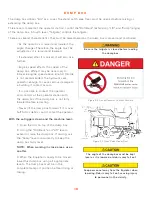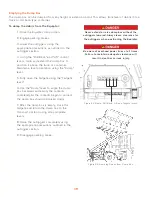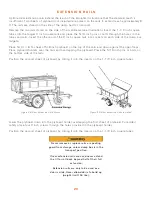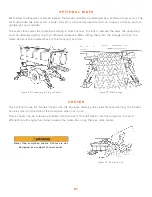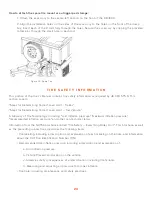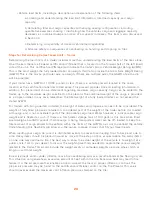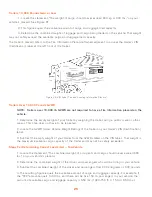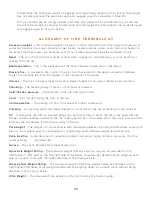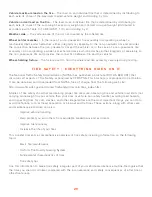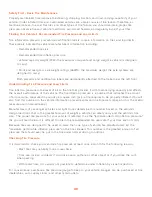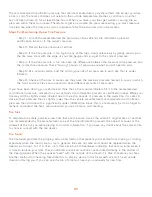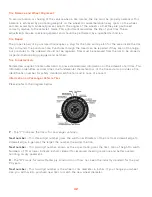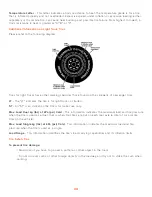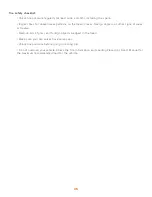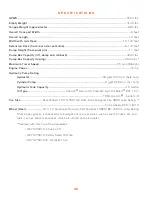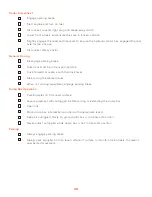
31
The recommended tire inflation pressure that vehicle manufacturers provide reflects the proper psi when
a tire is cold. The term cold does not relate to the outside temperature. Rather, a cold tire is one that
has not been driven on for at least three hours. When you drive, your tires get warmer, causing the air
pressure within them to increase. Therefore, to get an accurate tire pressure reading, you must measure
tire pressure when the tires are cold or compensate for the extra pressure in warm tires.
Steps For Maintaining Proper Tire Pressure
• Step 1: Locate the recommended tire pressure on the vehicle’s tire information placard,
certification label, or in the owner’s manual.
• Step 2: Record the tire pressure of all tires.
• Step 3: If the tire pressure is too high in any of the tires, slowly release air by gently pressing on
the tire valve stem with the edge of your tire gauge until you get to the correct pressure.
• Step 4: If the tire pressure is too low, note the difference between the measured tire pressure and
the correct tire pressure. These “missing” pounds of pressure are what you will need to add.
• Step 5: At a service station, add the missing pounds of air pressure to each tire that is under
inflated.
• Step 6: Check all the tires to make sure they have the same air pressure (except in cases in which
the front and rear tires are supposed to have different amounts of pressure).
If you have been driving your vehicle and think that a tire is under inflated, fill it to the recommended
cold inflation pressure indicated on your vehicle’s tire information placard or certification label. While your
tire may still be slightly under inflated due to the extra pounds of pressure in the warm tire, it is safer to
drive with air pressure that is slightly lower than the vehicle manufacturer’s recommended cold inflation
pressure than to drive with a significantly under inflated tire. Since this is a temporary fix, don’t forget to
recheck and adjust the tire’s pressure when you can obtain a cold reading.
Tire Size
To maintain tire safety, purchase new tires that are the same size as the vehicle’s original tires or another
size recommended by the manufacturer. Look at the tire information placard, the owner’s manual, or the
sidewall of the tire you are replacing to find this information. If you have any doubt about the correct size
to choose, consult with the tire dealer.
Tire Tread
The tire tread provides the gripping action and traction that prevent your vehicle from slipping or sliding,
especially when the road is wet or icy. In general, tires are not safe and should be replaced when the
tread is worn down to 1/16 of an inch. Tires have built-in treadwear indicators that let you know when it
is time to replace your tires. These indicators are raised sections spaced intermittently in the bottom of
the tread grooves. When they appear “even” with the outside of the tread, it is time to replace your tires.
Another method for checking tread depth is to place a penny in the tread with Lincoln’s head upside
down and facing you. If you can see the top of Lincoln’s head, you are ready for new tires.
Summary of Contents for RB4000
Page 2: ......
Page 6: ...iv RIGHT Hydraulic Tank Side REAR Tail Gate LEFT Operator Side FRONT Hitch ...
Page 9: ...3 Figure 2 Decals ...
Page 45: ......
Page 46: ...855 378 4783 www equipter com 49 Eagle Drive Leola PA 17540 ...


